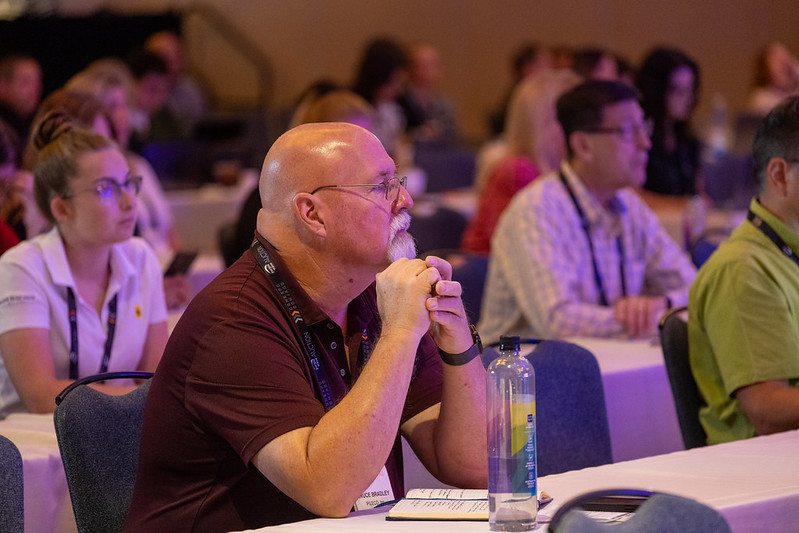By Jaime Vos, AEM Senior Director of Cultural Innovation —
While having lunch with a friend a few days ago, the subject turned to work. He shared concerns about a challenging project he was managing when he asked the question:
"How many times have you failed at something during your career?”
The comment puzzled me. I tried remembering an instance where a goal wasn’t reached, where something crashed and burned or failed to cross the finish line. I shared with him examples where initiatives were slow to reach their full potential, but I honestly couldn’t remember anything that could be defined as an absolute failure.
Then I thought: How is failure defined in the innovation process?
In many of the business articles I read, there are two opposing perspectives:
- The entrepreneurial/startup community that promotes: Fail fast and fail often.
- Standards-based organizations such as the military and NASA that state: Failure is not an option.
Even though these two statements are diametrically opposed, when we engage our critical-thinking skills, they can still both make sense. However, in my experience, it’s important to distinguish between the two depending on the cultural innovation methodology you’re trying to manage. For the sake of this article, I’ll position a theory that lies somewhere between these two philosophies, a definition that empowers a culture of innovation as it pertains to generating new business ideas. (Not necessarily landing on the moon.)
If we examine the idea of failure in a social context, the word can trigger a strong emotional response. We're conditioned at an early age to give the right answer to teachers and parents to gain approval. If we don’t, we risk embarrassment or humiliation. Unfortunately, many people carry that memory into adulthood, which makes them averse to risk. In addition, oftentimes, businesses focus only on positive results. Anything resembling a negative outcome might be considered a failure. This only reinforces our perception of the word.
Measure Failure with Specific Criteria
Any organization that desires to foster a culture of innovation must have a clear and consistent definition of what constitutes failure. Failure within an innovation process is not necessarily a negative outcome, but rather a learning opportunity that can help improve the quality and relevance of future ideas. By defining failure in terms of specific criteria, such as customer satisfaction, market potential, return on investment, or revenue generation, organizations can avoid ambiguity, and encourage experimentation and risk-taking. Defining failure in your process also helps to create a safe and supportive environment for employees, where they can share their challenges and learnings, as well as receive constructive feedback and guidance. In this case, failure is not the end of the innovation process, but rather serves as a steppingstone toward desired outcomes.
Experiment to Gain Insight
In this regard, the innovation process demands experimentation, trial, and error, learning from what works (and what doesn’t work). If employees can be taught that testing new ideas is simply a matter of iteration, then the old definition of what it means to fail begins to take on a new meaning.
Avoid Rigid Thinking
Another point to consider is that many organizations don’t cultivate creative and critical thinking skills. A rigid work culture of focusing strictly on results can limit the ability of employees to question, explore, and share. A flexible critical thinking approach can foster curiosity, imagination, and problem-solving, but it can also require more guidance, feedback, and evaluation from an organization’s leaders. Therefore, team leaders should consider the goals, content, and context of each project and adapt measurements accordingly, to support employees for the innovation process based on experimentation. If leaders demonstrate a measurable process of innovation that includes a clear definition of what constitutes failure, employees will feel more empowered to work within those guidelines.
Persistence Pays Off
When a chemist at the Rocket Chemical Company finally succeeded with his fortieth test for a new lubricant, he named it WD40. The name stood for Water Displacement/40th formulation. If he had viewed any of his previous thirty-nine attempts as failures, he may have given up and the product never would have made it to market.
Perhaps the reason I couldn't answer my friend’s question was because, like many innovators, I approached my work with a mindset of experimentation. None of my projects were final absolutes. They were always in development, works in progress, and always evolving (even after they had launched). If something didn’t work in testing, it was simply combined with something else or implemented in a different phase at a different time. I never acknowledged any of my work as “failing” simply because I saw it as an iterative development process.
To achieve a successful innovation process, organizations must educate employees that failure is a natural result of the testing process. It's simply a term given to an experimentation methodology that’s measured to achieved desired outcomes. When we reframe the concept of failure in this way, employees are empowered to collaborate and experiment, and the potential of new ideas becomes limitless.
For more perspectives from AEM staff, subscribe to the AEM Industry Advisor.





